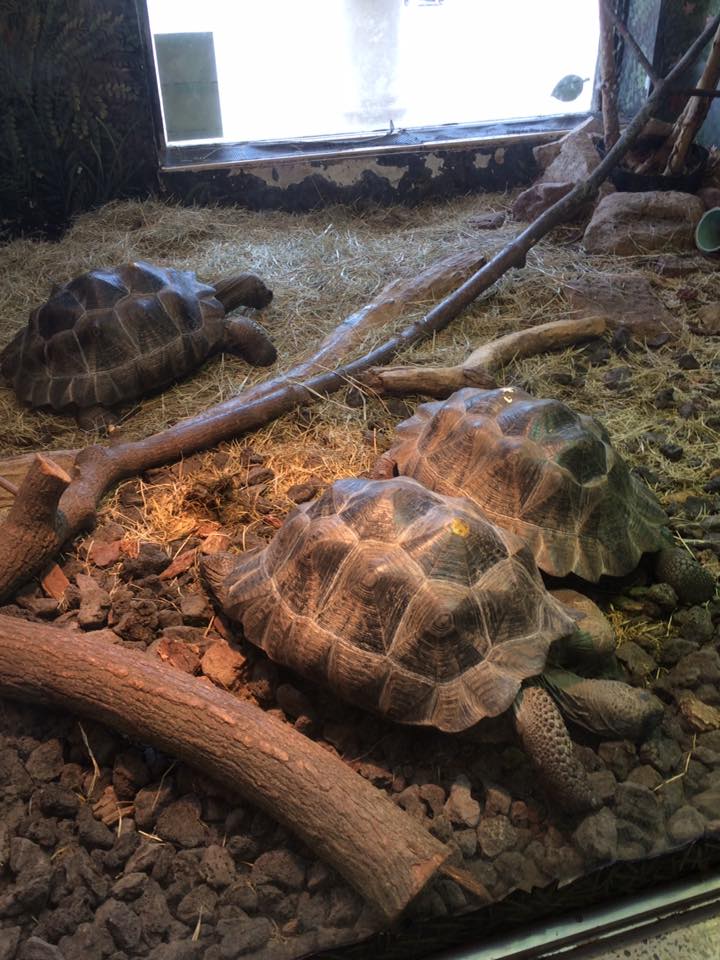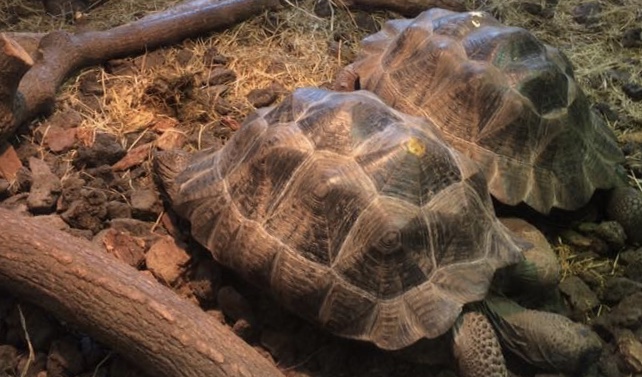ANIMAL: Iguana Cove Tortoise/Isabela Island Giant Tortoise/Cerro Azul Giant Tortoise Chelonoidis vicina Type of Animal: Tortoise Habitat: Volcanic areas, sparsely vegetated areas, mud wallows, waterholes, lowland areas, moist cool highlands, areas near ponds, areas near lakes, mud lakes, deciduous forest, evergreen forest, dry grasslands-juveniles/subadults often stay in lower areas Location(s): Isabela Island in Galapagos Appearance: Thick heavy shell intermediate between saddleback & domed, males larger/more saddle-backed, females more domed, gray sometimes w/ dusty gray-brown, intermediate shell shape overall Food/Diet: Grasses, leaves, cacti/cactus pads, lichens, fruit, berries, melons, milkweed, bromeliads, water ferns, tomatoes, vines, flowers, herbs, algae, crustaceans, tree bark, carrots, bamboo stalks, forbs, stinging nettles Status in Wild: Endangered Conservation: Breeding in zoos & breeding centers. Arnaldo Tupiza Tortoise Breeding Center on Isabela Island breeds this species. Lifestyle: Herds range from 4-30 tortoises. Males are dominant. Additional Info: Called: Male Female Young: Hatchling Group: Herd Weight: Male: 400-550 lbs Female: 250-330 lbs Gestation: 6 months Life Span: 100 years in wild, 150 years in captivity Height: Male: 4-5 ft Female: 2.95-3 ft Body Length: Male: 3.84 ft Female: 3.05 ft Tail Length: Male: 11.8 in Female: 3.9 in Adults have no predators. Introduced dogs, cats, pigs, & rats as well as native Galapagos Hawks eat juveniles/hatchlings. Fire ants prey on newborns. Endangered due to introduced predators eating hatchlings/eggs, competition w/ livestock for food, overgrazing, trampling of nests by livestock, habitat loss, agriculture, slow growth rate, late maturity (don’t reach maturity until 20 years old), & hunting for meat/oil/eggs. Well-known for being gentle giants. Like many reptiles, sex determined by egg temp, cooler sand temps mean more males & warmer sand temps mean more females. Courtship is rough, w/ male ramming female w/ front of shell & nipping her exposed legs until she draws them in, immobilizing her. Fun Fact(s): They’re quite lazy, sleeping/resting for up to 16 hours a day. Very slow-moving w/ average speed as low as 0.18 mph. They can go for a year without eating/drinking. Females dig holes in sand & pee all over it so sand doesn’t collapse on eggs. Many accounts mention these animals & other Galapagos Tortoises were most edible creature ever encountered-16th century explorers thought it was better than chicken, beef, mutton, & butter. Oil from fat was useful against all kinds of maladies.

